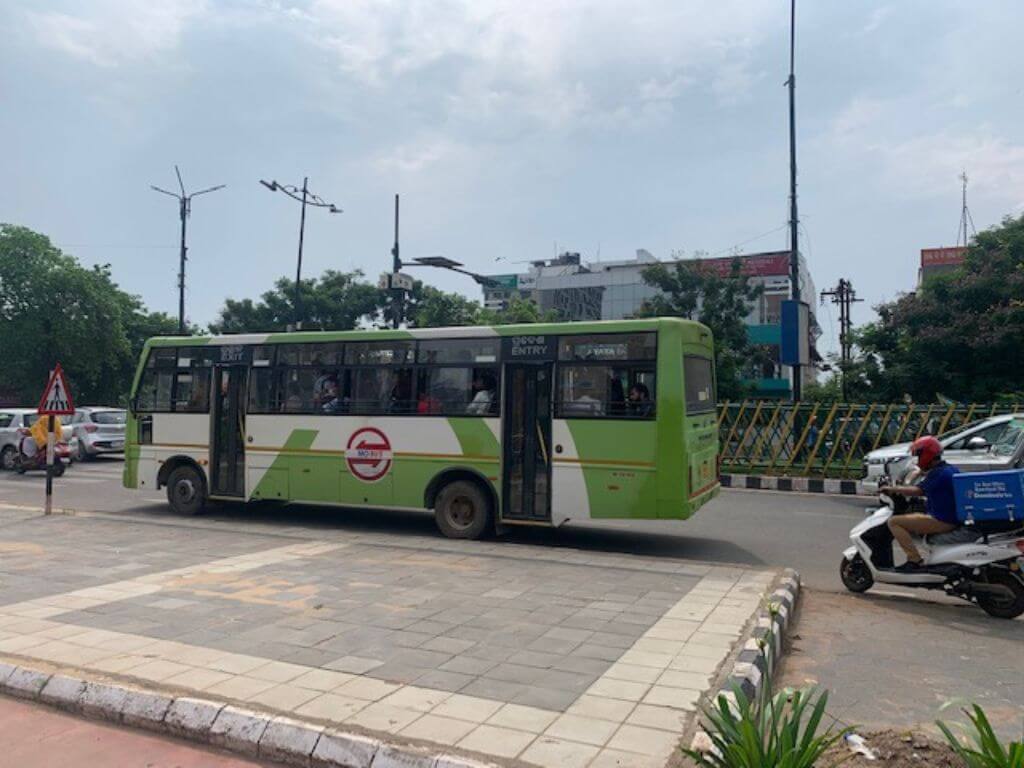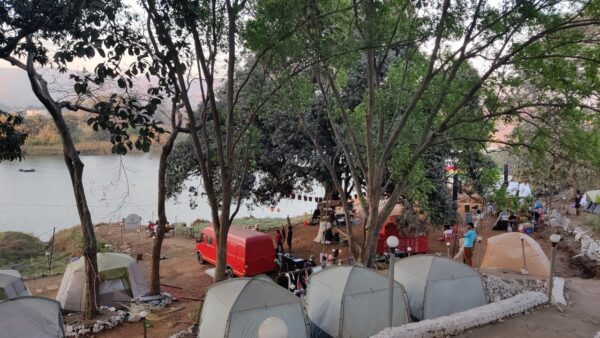Sometime last year, Bhubaneswar’s residents got a smart address – an alphanumeric code through which municipal officials identify the exact location of the house to attend to complaints or collect property tax. The geo-tagged digital address, which takes some getting used to, will eventually be synced with all civic records; just scanning the code can reveal a lot and make life smoother.
After the temple city, also among the first of India’s planned cities after independence, was selected under the Smart Cities Mission in 2016, it has seen a frenzy of planning and implementation. The Bhubaneswar Municipal Corporation (BMC) issuing digital addresses is only a part of it. Eventually, all residential and commercial buildings will get their digital addresses.
Six years later, digitalisation in the city still has hiccups and teething problems. It does not cover the city’s population evenly, and while some services have improved – visibly too – the success stories are not flooding the city. When numerous apps are thrust upon citizens, the transition from the traditional to digital becomes an uphill task for many.
The sync between the government, implementing agencies, and most importantly the citizens, is yet to fall in place. Digital infrastructure is a new layer in the city but it is unlikely to serve its purpose unless people — not only technology — are involved in the decision of what and how to digitalise.
Redesigning the landscape
Some changes are visible and significant. Bhubaneswar’s roads are now better demarcated, vending zones are marked out, bus stops are swankier, and the garbage collection has improved – all of which change the cityscape. The 5.5-km-long Janpath – the city’s most important road from Vani Vihar to Sishu Vihar Square – has undergone a transformation with broad pavements, bus bays, pedestrian crossings, cycle lanes, sitting areas and vending zones now making it seem like an international road. However, this was already a well-endowed area of the city and it must be asked if transforming it was a smart move after all.
Even as the “smart city” Bhubaneswar ranked second among cities with less than one million population, after Shimla, in the Ease of Living Index 2020 report, it ranked 25th in the Municipal Performance Index. The rankings are based on parameters such as services including health, education, water, sanitation, permit and infrastructure, and technology that includes digital access, literacy and governance.
During the COVID-19 lockdown, Bhubaneswar.me and Odisha-One — the portals to access the city’s multiple services such as bill payment, which were launched under the Smart City Mission – saw a boosted usage. However, harnessing technology to push for improvement in services also needs people’s participation, encouraging them to follow sustainable practices. Not many are conversant with the new technologies, others are reluctant to download the apps such as ‘Mo bus’ for public bus transport.

Photo: Shobha Surin
How smart is smart Bhubaneswar?
Can any of the “smart city” apps alert us about waterlogged roads during rains, ask commuters, pointing to the recurring floods on the city’s streets. The “smart city” plan comes under heavy criticism during floods – and it has been happening every monsoon for the past few years. Visuals of knee-deep rainwater in areas which had not experienced flooding earlier point to haphazard and unsystematic urbanisation – an issue that cannot be tackled by digitalisation and smart tech.
“Black spots have mushroomed at places on the city’s roads which hadn’t seen any accident earlier,” says Swayamprakash Mohanty, a landscape architect and a lecturer at Piloo Modi College of Architecture, Cuttack. “Smart kiosks are being installed for the past three or four years, but these are glorified rain shelters. A lot of public money is being pumped into such projects.”
According to a research paper “Sustainable development of smart cities: A systematic review of the literature,” the “smart city” concept aims to use digital innovation to improve the lives of citizens and make urban living sustainable by excelling in governance, economy, transport, environment, resources, and people’s services, such as healthcare, education, housing, and living. The plan introduces new services which impact urban policy-making and planning.[1]
“We are facing traffic jams because my city has turned smart,” remarks Mohanty. Fed up of driving on congested roads, he began to take the bus to the college. Traffic-choked roads is a perennial problem in Bhubaneswar, traffic jams and illegal parking add to the chaotic mess. Around 13 lakh vehicles ply on the city’s roads, according to Odisha Transport Department.
The Bhubaneswar Smart City Limited (BSCL) installed Artificial Intelligence (AI) cameras at 14 locations to detect violations. “Technology should ideally alert me of traffic jams or waterlogged roads, but closed-circuit television cameras (CCTVs) are used only for collecting fines,” says Piyush Rout, an urban planner. “Creating digital data is fine but the traffic system will only improve if we use the CCTVs properly. The app should tell me about traffic bottlenecks and warn me about traffic jams.”
A smart city would do that. “…a smart city is a city that can monitor and integrate functionality of all the critical infrastructure like roads, tunnels, airways, waterways, railways, communication power supply, etc., control maintenance activities and can help in optimizing the resources while keeping an eye on the security issues as well,” states the research paper “Developing Smart Cities: An Integrated Framework.”[2]
The entire Janpath stretch is scheduled to soon have smart parking for over 1,000 cars and 550 two-wheelers. The BSCL and the BMC have developed a centralised application ‘Mo Parking’ for monitoring and management of the facility on Janpath. “Soon, we will have to book a parking space through an app before we come out of house. This means we will have to plan much in advance. We have been very informal about going out,” says Mohanty.
‘Mo Bus’ gets thumbs up
Tutu Maharana, 35, travels from Patia to Rajmahal Square every day for work. A driver by profession, he reaches his employer’s house around 9am. He recalls how difficult it was to get a bus or an autorickshaw from Patia a few years ago. After ‘Mo Bus’ (My Bus) service was introduced in 2018, Maharana’s commute has become smoother.
“Patia had fewer town buses so I used to either hitch a ride or walk halfway. Now, the area has a bus depot and the service is good and cheap. This has saved me time and money,” says Maharana.
‘Mo Bus’ which sees 1.7 lakh passengers every day, has added 10 electric buses to its fleet of 255 diesel-run buses. A total of 50 e-rickshaws were also launched, for the last-mile connectivity at prominent places. The ‘Mo Bus’ features technology-driven systems such as free Wi-Fi, CCTV surveillance, GPS, public information display system and on-board announcement facility – all hallmarks of a smart city.
Bhubaneswar did not have a good public transport system. Cycle rickshaws were phased out in the 2000s. Autorickshaws took over the roads but they are expensive because they do not operate by the meter. Shared autos are not comfortable, especially for women. Even with the launch of state-of-the-art buses, many are still hesitant to take the public mode of transport; women see buses and shared autos as unsafe spaces despite the safety apps.
Brakes on bicycle initiative
Bhubaneswar used to be a bicycle-friendly city. Without an efficient and reliable public transport system, most people either cycled or rode a two-wheeler. Over the years, the city’s population multiplied and so did vehicles.
In 2018, ‘Mo Cycle’ initiative was started to give the first and last-mile connectivity. High-end cycles were parked near bus stops and riders had to book one through an app. As part of the smart city initiative, the plan was good but its implementation was poor. After an initial good response, the sharing bicycle system fizzled out. The cycles were either stolen or have been rusting at the stands owing to lack of maintenance and use.
The cycle tracks – which have been painted and demarcated only on major roads — are now used by licensed and unlicensed vendors or as parking spaces. The tech-based plan for a smooth commute, using eco-friendly or sustainable mode such as bicycle, did not quite succeed.

Photo: Shobha Surin
Digitalisation and ecology
Assessing the land, the trees and waterbodies digitally is important for the preservation. This is significant as Bhubaneswar has lost thousands of trees to “Smart City” projects. “Many trees are being cut but there has been no digitalisation of the trees cut and transplanted,” says Rout, adding that technology can be used to preserve and conserve.
Environmentalist Gayatri Devi believes that we need eco-urban planners along with urban planners. “There needs to be a balance in the environment. In our zeal for modernisation, we are destroying ecology. Urban planners are focussing only on concretisation of the land. We need ecology experts who can use digitalisation to keep records of tree cover, not just green cover.” Her organisation “Grow with Nature” will soon start digitally mapping the city for its ecology. “We have to act. We have to speak with the data and the information and present it to the government.”
Connecting or disconnecting public
The Bhubaneswar Smart City Limited recently tweeted: “More than 7,184 users have utilised over 250 GB of free data in Bhubaneswar through city-wide wi-fi from 1st to 31st August 2022.”
With more than 500 hotspots in the city, citizens can avail 50 MB of free data. People can use wi-fi by choosing a data plan. “This wi-fi only connects city services. It can work for a city like Chandigarh, which has a large commercial backbone,” says Mohanty.
Have these digitalised systems or tech-driven services made Bhubaneswar more sustainable, livable and efficient? While technology can bridge and strengthen communication between authorities and the citizens, it has to still transform the city.
“The city is becoming more concentrated. Developed areas are becoming more developed. The fringe areas should not be neglected because those are the areas which are growing. There’s a lot of public mistrust, a disconnect. People think only some parts of the city are being made smart,” says Mohanty.
There are no direct channels for people to file complaints. The complaints go to the Chief Minister’s Cell which then forwards them to the concerned departments which, in turn, raise a ticket for the problem to be solved. This bureaucracy poses more problems than it solves, but it remains a classic example of how tech or digitalisation on its own can be quite meaningless.
Unless the agencies in charge of digitalising Bhubaneswar have a comprehensive plan for all sectors and directly connect with people to educate them about the use and benefits of tech-based services, a smart or sustainable smart Bhubaneswar will only be a target on the digital horizon.
Shobha Surin, currently based in Bhubaneswar, is a journalist with 20 years of experience in newsrooms in Mumbai. She has seen Bhubaneswar from close quarters as the quiet green city transformed into a bustling concrete jungle. An associate editor at Question of Cities, she is concerned about Climate Change and is learning about sustainable development.
Cover photo: Shobha Surin




